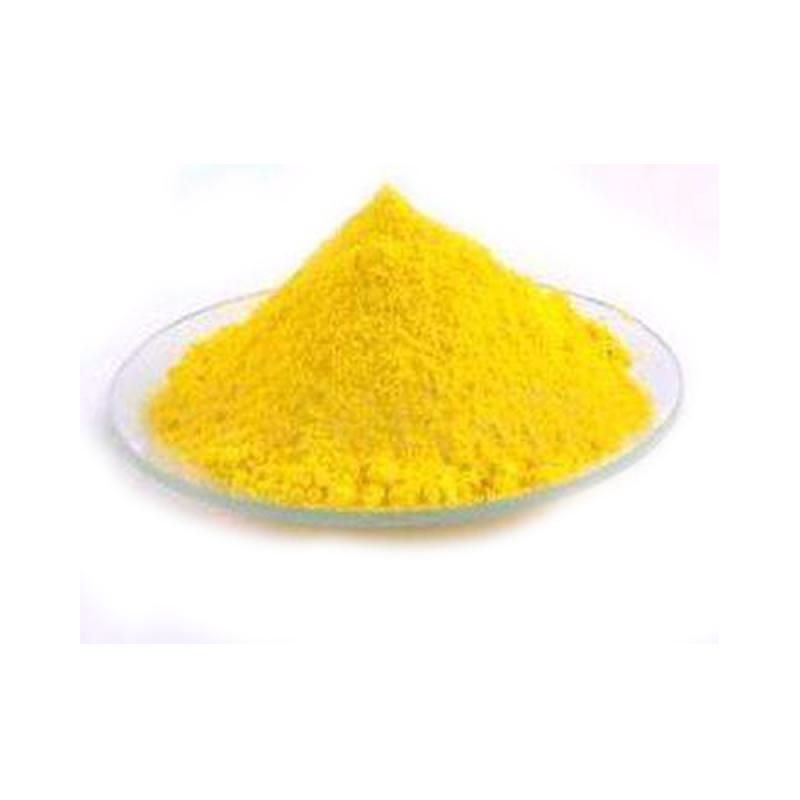Products Description of UV Absorber 326CAS#3896-11-5Ultraviolet absorbers refer to a kind of preparation that can prevent a large amount of ultraviolet rays from passing through.
Contact Now
Products Description of Tris(hydroxymethyl)nitromethane CAS#126-11-4Chemical, crystallizes into white crystals in a mixture of ethyl acetate and benzene.
Contact Now
Products Description of 5-Bromo-2-pyridinecarboxylic Acid CAS#30766-11-15-Bromo-2-pyridinecarboxylic acid is a chemical substance with the molecular formula C6H3BrNO2.5-Bromo-2-pyridinecarboxylic Acid Chemical PropertiesMelting point 173-175°CBoiling point 319.5±27.0 °C(Predicted)density 1.813±0.06 g/cm3(Predicted)storage temp. Keep in dark place,Sealed in dry,Room Temperaturesolubility Soluble in methanol.form Powderpka3.41±0.10(Predicted)color White to off-whiteInChIKeyMNNQIBXLAHVDDL-UHFFFAOYSA-NCAS DataBase Reference30766-11-1(CAS DataBase Reference)S
Contact Now
Butylated Hydroxytoluene CAS#128-37-0Aluminium Sulfate (CAS#16828-11-8), also known as Alum, is a white crystalline compound widely recognized for its effectiveness in water purification and its versatility in various industrial applications.
Contact Now
Products Description of Dioctyl Sulfosuccinate Sodium Salt CAS#577-11-7Docusate sodium, used to treat constipation, is used as a laxative or stool softener.
Contact Now
Products Description of 2-Ethoxybenzoic acid CAS#134-11-2Colorless oily liquid. Melting point 20.7℃, boiling point 174-176℃ (2.0kPa), relative density 1.105, refractive index 1.5400.
Contact Now
Products Description of Monoethanolamine CAS#141-43-52-Hydroxyethylamine, also known as ethanolamine, is an organic compound with the chemical formula C2H7NO.Monoethanolamine Chemical PropertiesMelting point 10-11 °C(lit.)Boiling point 170 °C(lit.)density 1.012 g/mL at 25 °C(lit.)vapor density 2.1 (vs air)vapor pressure 0.2 mm Hg ( 20 °C)refractive index n20/D 1.454(lit.)Fp 200 °Fstorage temp. Store at +15°C to +25°C.solubility Soluble in benzene, ether, carbon tetrachloride.pka9.5(at 25℃)form Liquidcolor
Contact Now
Products Description of Potassium iodide CAS#7681-11-0 Potassium iodide is an ionic compound, in which iodine ions can form dark yellow precipitated silver iodide with silver ions (decomposed by light and can be used to make high-speed photographic film), so silver nitrate can be used to test the presence of iodine ions. As a component of thyroid hormone, iodine is closely related to the basal metabolism of livestock and poultry, and participates in almost all metabolic processes.
Contact Now
2-DODECEN-1-YLSUCCINIC ANHYDRIDE CAS#19780-11-1Product Name:2-DODECEN-1-YLSUCCINIC ANHYDRIDESynonyms:2,5-Furandione, 3-(2-dodecenyl)dihydro-;2,5-Furandione, 3-dodecenyl-;3-(2-dodecenyl)dihydro-5-furandione;3-[(2E)-2-Dodecenyl]dihydro-2,5-furandione;3-(2-dodecenyl)succinic anhydride;2-(2-Dodecene-1-yl)succinic anhydride;2-(2-Dodecenyl)succinic anhydride;2-Dodecen-1-yl(-)succinicanhydridCAS:19780-11-1MF:C16H26O3MW:266.38EINECS:243-296-9Product Categories:Carbonyl Compounds;Carboxylic Acid Anhydrides;Organic Building Blocks;Anhydride MonomersUnsaturated fatty acids and derivatives;Monoenoic fatty
Contact Now
Products Description of Kavain CAS#3155-48-4White crystalline powder, soluble in organic solvents such as methanol, ethanol, DMSO, etc., derived from Kava pepper.Kavain Chemical PropertiesMelting point 142-148 °CBoiling point 432.6±45.0 °C(Predicted)density 1.15±0.1 g/cm3(Predicted)storage temp. Amber Vial, -20°C Freezer, Under inert atmospheresolubility Chloroform (Slightly), Ethyl Acetate (Slightly)color Off-White to Pale YellowBRN 177877Stability:Light and Moisture SensitiveInChIInChI=1S/C14H14O3/c1-16-13-9-12(17-14(15)10-13)8-7-11-5-3-2-4-6-11/h
Contact Now
Products Description of Monoethanolamine CAS#141-43-52-Hydroxyethylamine, also known as ethanolamine, is an organic compound with the chemical formula C2H7NO.Monoethanolamine Chemical PropertiesMelting point 10-11 °C(lit.)Boiling point 170 °C(lit.)density 1.012 g/mL at 25 °C(lit.)vapor density 2.1 (vs air)vapor pressure 0.2 mm Hg ( 20 °C)refractive index n20/D 1.454(lit.)Fp 200 °Fstorage temp. Store at +15°C to +25°C.solubility Soluble in benzene, ether, carbon tetrachloride.pka9.5(at 25℃)form Liquidcolor
Contact Now
Products Description of PRL-8-53 CAS#51352-87-5White crystal powderPRL-8-53 Chemical Propertiesstorage temp. under inert gas (nitrogen or Argon) at 2-8°Csolubility DMF: 30 mg/ml DMSO: 30 mg/ml Ethanol: 30 mg/ml PBS (pH 7.2): 10 mg/mlform A crystalline solidInChIInChI=1S/C18H21NO2.ClH/c1-19(14-16-7-4-3-5-8-16)12-11-15-9-6-10-17(13-15)18(20)21-2;/h3-10,13H,11-12,14H2,1-2H3;1HInChIKeyHLBBSWSJLPLPRU-UHFFFAOYSA-NSMILESC(OC)(=O)C1=CC=CC(CCN(CC2=CC=CC=C2)C)=C1.[H]ClFactory and Equipment ShowFast delivery timeInventory 2-3 working days New production 7-10 working days
Contact Now
Products Description of 4,4'-Diamino-2,2'-Stilbenedisulfonic Acid CAS#81-11-8 4,4'-diaminostilbene-2,2'-disulfonic acid, an organic chemical substance, molecular formula: C14H14N2O6S2.4,4'-Diamino-2,2'-stilbenedisulfonic acid Chemical PropertiesMelting point 300 °Cdensity 1.4732 (rough estimate)vapor pressure 1.3hPa at 25℃refractive index 1.6510 (estimate)storage temp. Keep in dark place,Inert atmosphere,Room temperaturesolubility Aqueous Base (Slightly)pka-1.58±0.50(Predicted)form Crystalline Powdercolor Cream to yellow
Contact Now
Products Description of PyridiniumCAS#68909-18-2White powderPyridinium, 1-(phenylmethyl)-, ethyl methyl derivs., chlorides Chemical PropertiesBoiling point 116.34℃[at 101 325 Pa]density 1.104[at 20℃]vapor pressure 2hPa at 20℃Water Solubility 100g/L at 30℃InChIInChI=1S/C13H16N.ClH/c1-14(10-6-3-7-11-14)12-13-8-4-2-5-9-13;/h2-10H,11-12H2,1H3;1H/q+1;/p-1InChIKeyNBNVYJFZJWMHPR-UHFFFAOYSA-MSMILESC1[N+](CC2=CC=CC=C2)(C)C=CC=C1.[Cl-]LogP3 at 25℃EPA Substance Registry System1-(Phenylmethyl)pyridinium Et Me derivs., chlorides (68909-18-2)Factory and Equipment ShowFast delivery t
Contact Now
Products Description of (1H-indol-3-yl)(2,2,3,3-tetramethylcyclopropyl)methanone CAS#895152-66-6White powder(1H-indol-3-yl)(2,2,3,3-tetramethylcyclopropyl)methanone Chemical PropertiesBoiling point 375.0±15.0 °C(Predicted)density 1.099±0.06 g/cm3(Predicted)storage temp. 2-8°Csolubility DMF: 50 mg/ml; DMF:PBS (pH 7.2); (1:7): 0.13 mg/ml; DMSO: 33 mg/ml; Ethanol: 17 mg/mlform A crystalline solidpka15.50±0.30(Predicted)InChIInChI=1S/C16H19NO/c1-15(2)14(16(15,3)4)13(18)11-9-17-12-8-6-5-7-10(11)12/h5-9,14,17H,1-4H3InChIKeyWYZQBEQQQKCTHM-UHFFFAOYSA-NSMILESC(C1C2=C(NC=1)
Contact Now
Products Description of Color Developing Agent CD-3 CAS#24567-76-8White powder crystalColor Developing Agent CD-3 Chemical PropertiesWater Solubility Soluble in waterform powder to crystalcolor White to Light yellow to Light orangeInChIInChI=1S/2C12H21N3O2S.3H2O4S/c2*1-4-15(8-7-14-18(3,16)17)11-5-6-12(13)10(2)9-11;3*1-5(2,3)4/h2*5-6,9,14H,4,7-8,13H2,1-3H3;3*(H2,1,2,3,4)InChIKeyNPDFXFLCEDDWEG-UHFFFAOYSA-NSMILESC1(=CC=C(N)C(C)=C1)N(CC)CCNS(=O)(=O)C.C1(=CC=C(N)C(C)=C1)N(CC)CCNS(=O)(=O)C.S(=O)(=O)(O)O.S(=O)(=O)(O)O.S(=O)(=O)(O)OSafety InformationHazard Codes Xn;N,N,XnRisk
Contact Now
Products Description of 3,4-Dimethoxythiophene CAS#51792-34-83,4-Dimethoxythiophene is an organic compound with the molecular formula C6H8O2S.3,4-Dimethoxythiophene Chemical PropertiesBoiling point 100-102 °C/10-11 mmHgdensity 1.209 g/mL at 25 °Crefractive index 1.5409Fp 224 ºFstorage temp. -20°Cform powder to lump to clear liquidcolor White or Colorless to YellowWater Solubility Miscible with organic solvents.
Contact Now
Products Description of 1,3-bis(3-glycidoxypropyl)tetramethyldisiloxane CAS#126-80-7Colorless liquid1,3-bis(3-glycidoxypropyl)tetramethyldisiloxane Chemical PropertiesMelting point <0°CBoiling point 184 °C2 mm Hg(lit.)density 0.996 g/mL at 20 °C(lit.)refractive index n20/D 1.452Fp 110°CSpecific Gravity0.996Hydrolytic Sensitivity3: reacts with aqueous baseBRN 223966InChIInChI=1S/C16H34O5Si2/c1-22(2,9-5-7-17-11-15-13-19-15)21-23(3,4)10-6-8-18-12-16-14-20-16/h15-16H,5-14H2,1-4H3InChIKeyMFIBZDZRPYQXOM-UHFFFAOYSA-NSMILES[Si](C)(C)(
Contact Now
Products Description of Mineral oil CAS#8042-47-5 is a highly refined petroleum distillate that is colorless to pale yellow in appearance, with a clear and viscous texture. It is essentially odorless, with a specific gravity ranging from 0.79 to 0.94 at 15.6 °C, and a boiling point that varies widely, typically between 150–894 °C. Mineral oil has a low vapor pressure, which is less than 0.1 kPa at 20 °C, and a flash point of 168.33 °C.
Contact Now
Products Description of 5-Bromo-8-nitroisoquinoline CAS#63927-23-1It is a light yellow solid powder at room temperature and pressure.
Contact Now
Products Description of PolycaprolactoneCAS#24980-41-4Polycaprolactone (PCL) is a semi-crystalline polymer and a chemically synthesized biodegradable high molecular material. Its structural repeating unit contains 5 non-polar methylene groups - CH2.
Contact Now
Products Description of VANPLAST 202 CAS#61790-48-5White powderVANPLAST 202 Chemical PropertiesBoiling point 1683.39℃[at 101 325 Pa]vapor pressure 0Pa at 25℃Water Solubility 1.714ng/L at 25℃LogP41.08 at 25℃EPA Substance Registry SystemSulfonic acids, petroleum, barium salts (61790-48-5)Factory and Equipment ShowFast delivery timeInventory 2-3 working days New production 7-10 working days
Contact Now
Products Description of 5-CyanoindoleCAS#15861-24-2Off-white crystals, melting point 106-107℃.5-Cyanoindole Chemical PropertiesMelting point 106-108 °C(lit.)Boiling point 249.72°C (rough estimate)density 1.1777 (rough estimate)refractive index 1.6211 (estimate)storage temp. Keep in dark place,Inert atmosphere,Room temperaturesolubility Chloroform, Hexane, Methanolform Crystalline Powderpka15.62±0.30(Predicted)color White to slightly yellowWater Solubility Soluble in chloroform, hexane and methanol.
Contact Now
Products Description of Dibenz[b,f]azepine-5-carbonyl chlorideCAS#33948-22-0Crystallization (toluene).
Contact Now

























![Dibenz[b,f]azepine-5-carbonyl chlorideCAS#33948-22-0](https://d3rnfhc14zcmdf.cloudfront.net/cdn/ff/hhNHV6f2JUcBq-BPrkFDyfPcYc9mG8tYKIw3GCEP6Wk/1716974888/public/styles/chanpinzhutu/public/2024-05/%E7%99%BD%E8%89%B2%E7%B2%89%E6%9C%AB%20%283%29_30.jpg?itok=-yg_9SCp)





